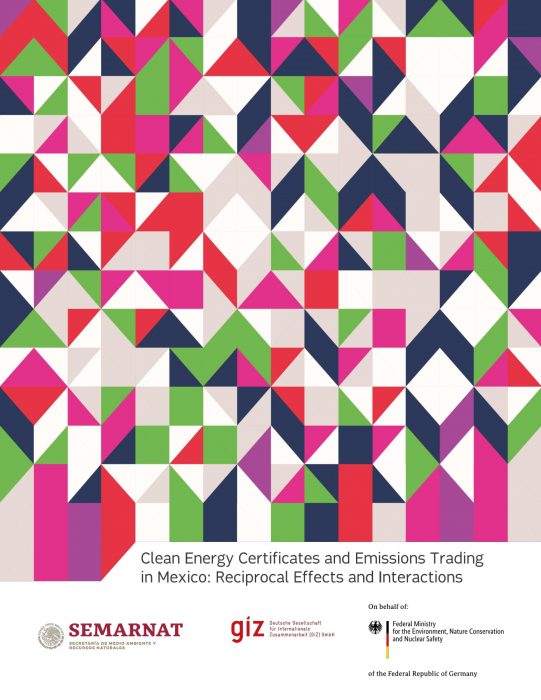The project “Preparation of an Emissions Trading System in Mexico” (SiCEM) publishes a novel and Mexico-specific study on the reciprocal effects and interactions between the Mexican ETS and the existing Clean Energy Certificates quota system, as part of an effort to provide solid technical recommendations to support a robust and cost-effective ETS in Mexico.
In light of the upcoming pilot phase of the Mexican ETS, which is set to begin in 2020, the GIZ project “Preparation of an Emissions Trading System in Mexico” (SiCEM) has been exploring the role and interactions of the ETS within the broader Mexican policy mix.
The 2018 reform to the Mexican General Law on Climate Change (LGCC) established a mandatory Emissions Trading System to support climate change mitigation at the lowest cost possible, including a specific requirement that the ETS design recognizes emissions reductions obtained through Clean Energy Certificates (in Spanish, CEL). Acknowledging that this requirement –if broadly defined– could result in double counting of the emissions reductions resulting from obligations from the CEL quota system or the ETS, a thorough study drawing on international experiences handling similar interactions between instruments was developed. Also, a road map for the effective simultaneous operation of both CEL and ETS systems in Mexico was suggested.
Although the CEL quota system and the ETS serve different purposes they complement each other by providing incentives that support compliance with the other instrument. For instance, a cleaner electricity production –which the CEL quota promotes– results in lower CO2 emissions from the electricity sector. On the other hand, the carbon price resulting from an ETS provides additional incentives for low-carbon electricity generation. Double counting arises if CELs are used as a compliance instrument for the ETS or if emissions reduction within the electricity sector are accepted as offsets, since the CO2 emissions reductions in the electricity sector resulting from clean generation displacing emitting generation at an installation are automatically captured by the emissions reported to the ETS by the same installation. Double counting must be avoided, as it threatens the environmental integrity and the effectiveness of the ETS.

How can the ETS design consider emissions reductions from the CEL system, without incurring in double counting? The recommendation is to incorporate information on emissions reduction in the electricity sector into the ETS cap design. If, as a result of the CEL quota system, clean electricity generation is greatly increased in such a way that carbon intensive generation is displaced, the cap could be adjusted downwards to avoid an oversupply of allowances and a carbon price of zero. On the other hand, if a comprehensive modelling of the electricity sector shows the CEL system will not incentivize sufficient clean generation, an undersupply and thus increase in carbon prices can be expected – which regulators might want to adjust by fine-tuning the ETS design in advance.
The recommendations stated in the report are consistent with the experiences of two jurisdictions in the United States: the California Cap and Trade and the Regional Greenhouse Gas Initiative (RGGI). The upcoming pilot phase provides with an opportunity to test the Mexican ETS design in this regard. Additional studies covering a variety of technical issues be published in the “IKI-Alliance Mexico” blog in the coming months.
For more information, please contact us at: Comercio.Emisiones-MX[AT]giz.de
Click on the image below to download the publication:

